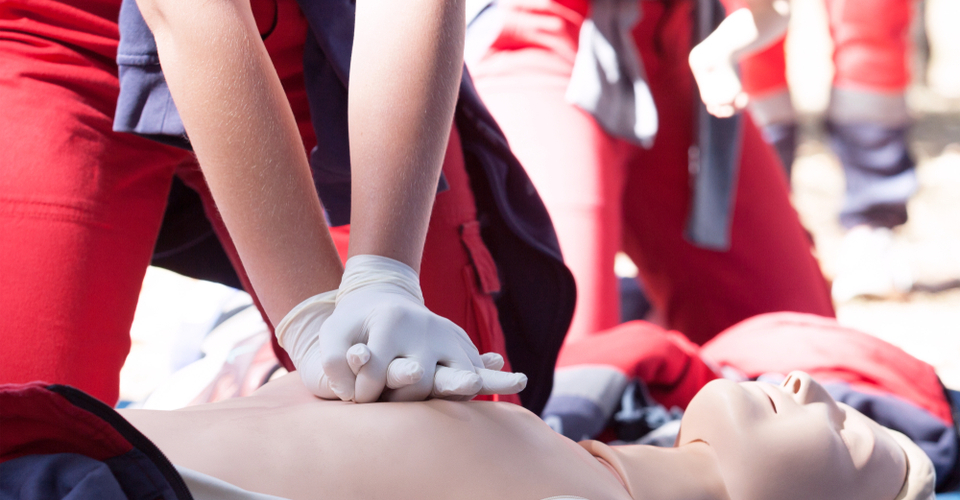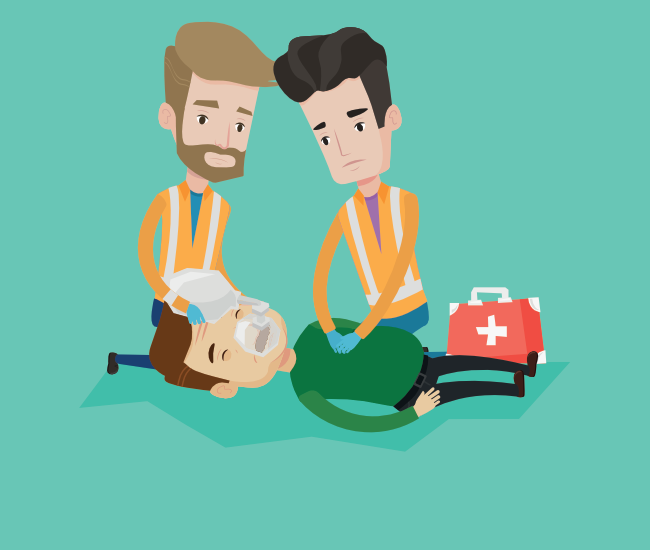Best Describes the Purpose for Hands-only Cpr
Hands-only CPR is better and more effective than full CPR and is now the best way to provide CPR for any patient by any responder Hands-only CPR reduces risk of liability and increases oxygenation better than CPR with mouth-to-mouth resuscitation Hands-only CPR is now the only method for providing CPR regardless your level of education and expertise Hands. Hands-Only CPR is an effective way for any bystander to double or triple a cardiac arrest victims chance of survival.

How To Position Your Hands For Cpr
After called 911 and beginning CPR compressions which of the these describes the correct posture for delivering effective compressions.

. Umka21 38 1 year ago. Research suggests that hands-only CPR is most effective on adults as cardiovascular problems are often the cause of their cardiac arrest. Which of these best describes the purpose for hands-only CPR.
Hands-only CPR is better and more effective than full CPR and is now the best way to provide CPR for any patient by any responder. Surveys Americans who had not been trained in CPR within the past five years said they would be more likely to perform Hands-Only CPR on a teen or adult who collapses suddenly. If someone immediately starts chest compressions which mimic the hearts pumping action blood keeps flowing to the persons brain.
Hands-only CPR is better and more effective than full CPR and is now the best way to provide CPR for any patient by. Hands-only CPR which is also known as compression-only CPR is probably better termed compression-only resuscitation because it does not involve rescue breaths. CPR stands for Cardiopulmonary Resuscitation which includes two rescue breaths for every 100 compressions per minute Lets take a look at how compression-only resuscitation works.
Hands-only CPR is better and more effective than full CPR and is now the best way to provide CPR for any patient by any responder. AHands-only CPR is better and more effective than full CPR and is now the best way to provide CPR for any patient by any responderBHands-only CPR reduces risk of liability and increases oxygenation better than CPR with mouth-to-mouth resuscitationCHands-only CPR is now the only method for providing CPR regardless your level of education and. When the scene becomes unsafe when the victim begins to move and breathe normally andor when another trained person arrives to take over.
Which of these best describes the purpose for hands-only CPR. Read More Which of these best describes the purpose for hands-only CPR. Hands-Only CPR is an effective way for any bystander to double or triple a cardiac arrest victims chance of survival.
Hands only CPR reduces the risk of liability and increases oxygenation better than CPR with mouth to mouth After CPR has been started when is an appropriate time to stop. Also Hands-Only CPR is an easy-to-remember and effective option for people who have been trained in CPR before but are afraid to help because they are not confident that they can remember and. Position yourself over the patient with yoru arms at a 90-degree angle hands placed on the lower third of the sternum between the breasts.
The purpose of using a barrier device during CPR is to. If someone immediately starts chest compressions which mimic the hearts pumping action blood keeps flowing to the persons brain. Prevent the spread of disease or illness What is the purpose of the first aid guide i which is included in the first aid kit.
Hands-only CPR reduces risk of liability and increases oxygenation better. 100-120 compressions per minute. AHands-only CPR is better and more effective than full CPR and is now the best way to provide CPR for any patient by any responderBHands-only CPR reduces risk of liability and increases oxygenation better than CPR with mouth-to-mouth resuscitationCHands-only CPR is now the.
Hands-only CPR is better and more effective than full CPR and is now the best way to provide CPR for any patient by any responder Hands-only CPR reduces risk of liability and increases oxygenation better than CPR with mouth-to-mouth resuscitation Hands-only CPR is now the only method for providing CPR regardless your level of education and expertise Hands. Whereas in children the majority of their cardiac arrest events. Hands-only CPR reduces risk of liability and increases oxygenation better than CPR with mouth-to-mouth resuscitation.
Hands-only CPR reduces risk of liability and increases oxygenation better than CPR with mouth-to-mouth resuscitation. Hands-only CPR is designed for the untrained lay rescuer or someone who isnt comfortable or confident giving mouth-to-mouth resuscitation. Hands-only CPR is better and more effective than full CPR and is now the best way to provide CPR for any patient by any responder B Hands-only CPR reduces risk of liability and increases oxygenation better than CPR with mouth-to-mouth resuscitation C Hands-only CPR is now the only method for providing CPR regardless your level of education and expertise D.

Why Hands Only Cpr Saves Lives

What Is Hands Only Cpr A Lifesaving Technique Within Your Reach Procpr

Cpr Infant Infant Cpr Baby Safety Toddler Health

Wilderness First Aid Certification 2 Day Course Cpr Training Cpr Emergency Medical

What Is Hands Only Cpr Life Enriching Communities

Why Hands Only Cpr Saves Lives

Cpr Hand Placement Positioning Your Hands For Chest Compressions Procpr

Best College Destinations In The U S College Fun College Town College

Why Hands Only Cpr Saves Lives

Pin On Bls First Aid Emergency

Php 7 4 12 Phpinfo Cpr Songs Cpr Training Cpr Funny

Danger Response Send For Help Airway Breathing Cpr Defibrillator Knowing The Drsabcd Action Plan Ca How To Plan Emergency Action Plans Emergency Medical

Hands Only Cpr American Heart Association International

Firstaid First Aid Student Basic Life Support Emergency Nursing Medical Knowledge

Why Hands Only Cpr Saves Lives

Why Hands Only Cpr Saves Lives

Hypothermia This Week S Jama Patient Page Describes Hypothermia Its Prevention And Treatment Strateg Medical Knowledge Survival Life Hacks Survival Skills

Comments
Post a Comment